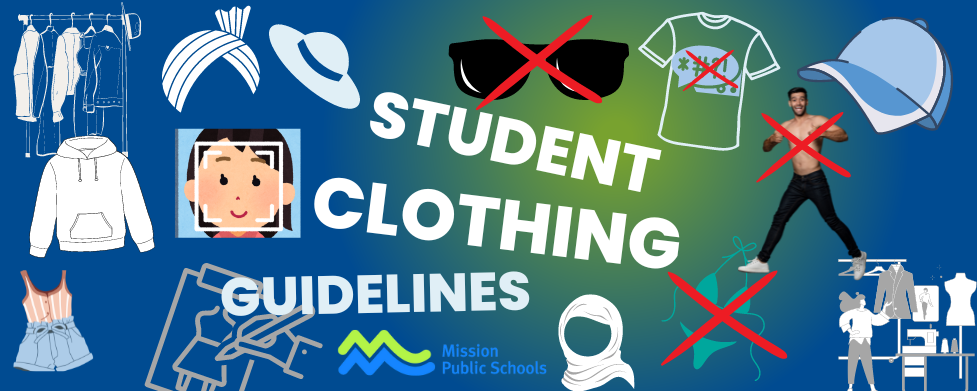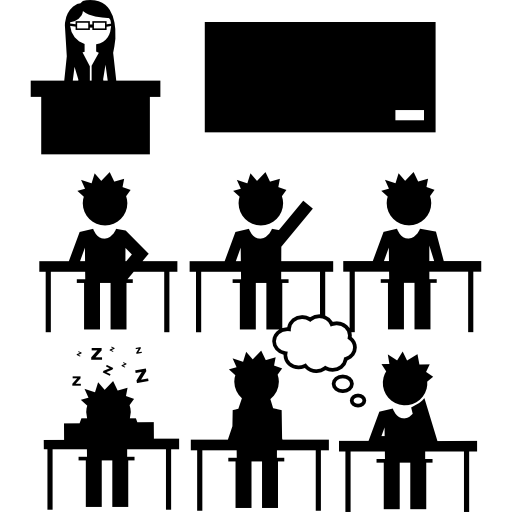
Guidelines in accordance with the Board's Student Clothing Policy 3.9
- Mission Public Schools supports individual choice in clothing for students, emphasizing safety and respect.
- Students have a right to individual choice, safety, and respect - for self and others.
- Clothing worn must be safe and suitable to participate in activities, such as physical health education, science experiments, fine arts, and/or applied skills as necessary.
- Hats, headwear, and clothing should demonstrate a respect for the school community and be suitability for a typical K-12 school.
Students must not wear clothing:
- That compromises a safe and inclusive learning environment, such as clothing that includes language or images that are threatening or disrespectful;
- That promotes the use of tobacco, marijuana, illegal drugs, or alcohol;
- That advocates illegal activity;
- That encourages sexism, racism, homophobia, or bigotry;
- That includes anything that promotes hatred;
- That includes messages or graphics referring to gang culture, sex, pornography, obscene images, weapons, or violence.
- Students must not wear clothing which obscures their face, other than for religious purposes, health and safety requirements, or where required to accommodate a disability.
Procedures for addressing unsuitable clothing:
 1. When there are differences in perspective, staff and students will seek common understanding in a mutually respectful manner, in consultation with the school principal or vice-principal.
1. When there are differences in perspective, staff and students will seek common understanding in a mutually respectful manner, in consultation with the school principal or vice-principal.
2. Decisions regarding clothing suitability will not be made with a gender or cultural bias, but simply considering the respectful learning and working space.
3. If a student comes to school dressed in clothing that is not suitable for the day's activities or is contrary to these guidelines or the Board policy, the school will address the concern so that it does not cause shame for the student or loss of learning time.
4. Interventions will be respectful, restorative, and educational.